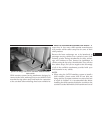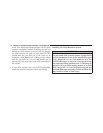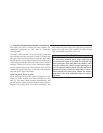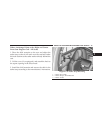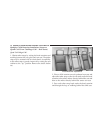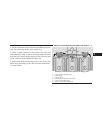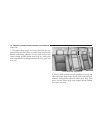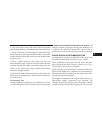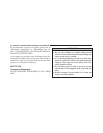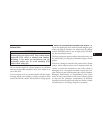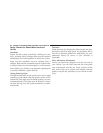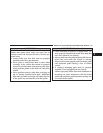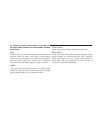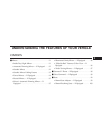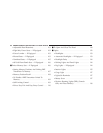
3. Pass each tether strap hook under the head restraint
and through the loop of webbing behind the child seat.
4. Route each tether strap through the tether strap loop
behind the center seat, and attach the hooks to the anchor
located directly behind the center rear seat located under
a plastic cover.
5. Place a child restraint on the center rear seat and
adjust the tether strap so that it will reach under the head
restraint through the center seat tether strap loop and
anchor to the tether strap loop located behind either
outboard seating positions.
6. Install each child restraint and remove the slack in the
tether strap according to the child restraint manufactur-
er’s instructions.
Transporting Pets
Airbags deploying in the front seat could harm your pet.
An unrestrained pet will be thrown about and possibly
injured, or injure a passenger during panic braking or in
a collision. Pets should be restrained in the rear seat in
pet harnesses or pet carriers that are secured by seat belts.
ENGINE BREAK-IN RECOMMENDATIONS
A long break-in period is not required for the engine and
drivetrain (transmission and axle) in your vehicle.
Drive moderately during the first 300 miles (500 km).
After the initial 60 miles (100 km), speeds up to 50 or
55 mph (80 or 90 km/h) are desirable.
While cruising, brief full-throttle acceleration within the
limits of local traffic laws, contributes to a good break-in.
Wide-open throttle acceleration in low gear can be detri-
mental and should be avoided.
The engine oil installed in the engine at the factory is a
high-quality energy conserving type lubricant. Oil
changes should be consistent with anticipated climate
conditions under which vehicle operations will occur. For
2
THINGS TO KNOW BEFORE STARTING YOUR VEHICLE 79



